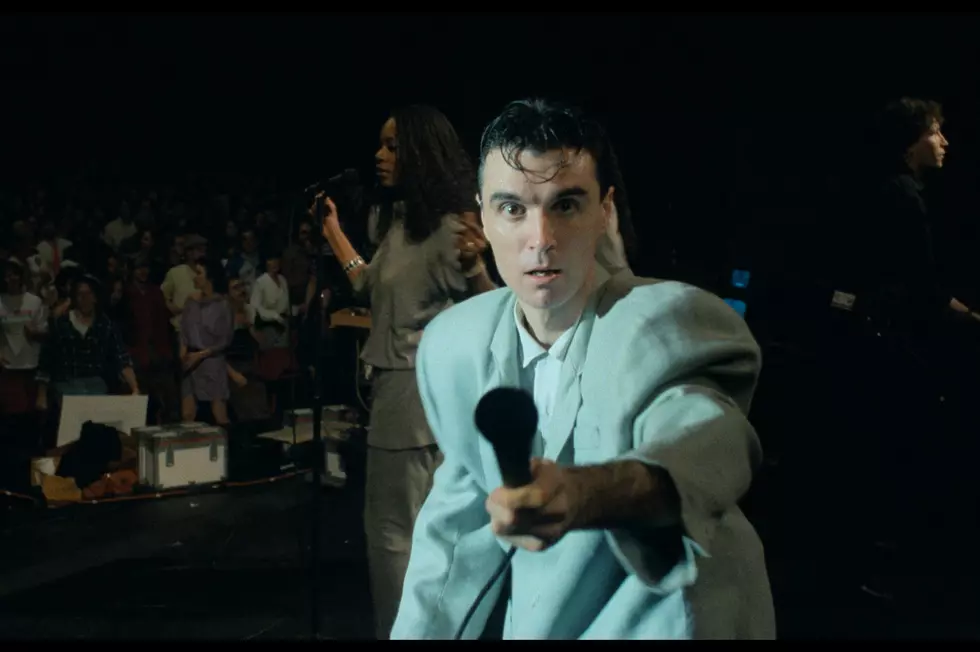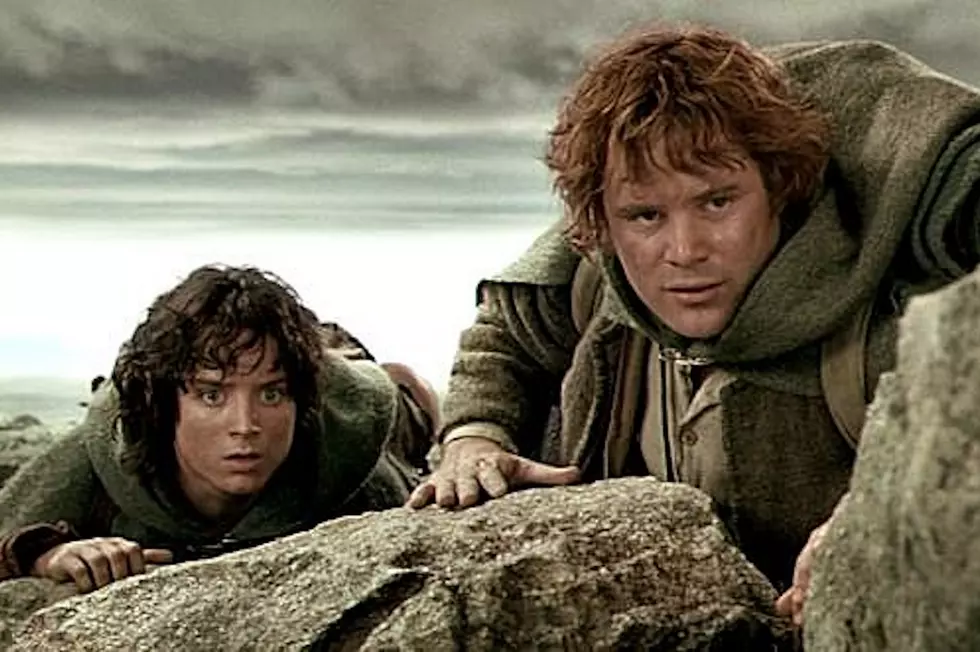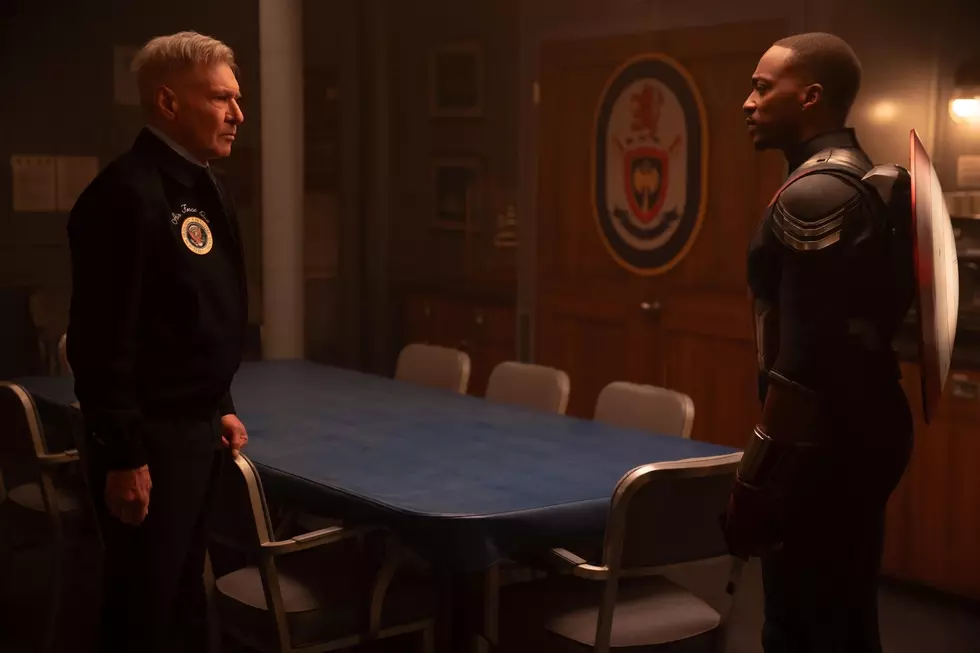
We Can Be Heroes: Making a Case for Queer Superheroes in Hollywood
When you go to the movies this year, there’s one thing you’re guaranteed to see a lot of: superheroes. Captain America: Civil War will feature at least 15 superheroes and supervillains, and throughout 2016 roughly 60 comic book characters will grace the screen across six Marvel and DC franchises. They’ll be white, black, Asian, male and female, but there’s one character you almost certainly won’t see this year: an LGBTQ superhero.
As of 2011, an estimated 9 million Americans identify as lesbian, gay, bisexual, or transgender1, yet Hollywood blockbusters continue to overlook the existence of queer people, especially the ones already fighting crime on comic pages where there are at least 37 openly LGBTQ characters. For most audiences this lack of queer representation may seem like the accepted norm, but for the LGBTQ community the omission is a repeated assertion that queer people aren’t welcomed or worthy of existing in those fictional worlds. Acknowledging lesbian, gay, bisexual, transgender and other spectrums of queer identities in franchise movies won’t only make Hollywood more diverse, it could positively change the way our culture perceives the queer community.
It’s a Bird! It’s a Plane! It’s Another Straight Superhero!
Say the word “superhero” and a singular image is evoked: a brawny white dude in a cape and tights fighting a bad guy and saving a damsel in distress. From Superman rescuing Lois Lane to an upside-down Spider-Man kissing Mary Jane, American comic book movies have conditioned audiences into connecting superheroes with stereotypical gender roles, heterosexuality, and white dominance. Marvel and Warner Bros. have only just started introducing female superheroes (Wonder Woman) and superheroes of color (Black Panther) onto the big screen, but both, along with other studios, continue to ignore the fact that American heroes can also come with other nuanced identities.
While 2015 may have felt like a groundbreaking year for LGBTQ representation in film with achievements in Carol and Tangerine, the story was quite the opposite for mainstream movies. Two of the seven highest grossing studios of 2015 featured no LGBTQ characters, and out of the 126 films released by all seven studios last year, only 17.5% (22 total movies) featured lesbian, gay, bisexual and/or transgender characters, according to GLAAD’s latest studio report. That number is the exact same finding in 2014 films with queer characters, proving that mainstream LGBTQ representation remains stagnant2. Even worse, last year showed a significant drop in showcasing queer characters of color.
Reflecting the larger social and political norms of American life, film has long embodied heterocentrism, furthering the belief that everyone is straight and cisgender. For nearly two decades beginning in the 1930s, the strict Hays Code banned homosexuality from being shown on screen. Hollywood still found subliminal ways to nod at queerness through the advent of the “sissy,” an effeminate male character. Though some depictions were relatively harmless, the majority of queer allusions in film were used as comedic fodder and symbols of deviant sexuality and masculine inferiority. (The archetype of the sissy is far from retired; for proof, see the homophobic agenda of last year’s Get Hard.)
The most unfortunate portrayals of queerness however are often found in the films Hollywood celebrates most: the queer tragedy. These are the weepy dramas about an LGBTQ protagonist, usually based on a real person, who’s been persecuted because of their identity, and most often end with their murder or suicide. You’ll find these grim portraits of queerness sprinkled throughout film history since the 1960s up to recent Oscar nominees, from The Children’s Hour to Philadelphia, Boys Don’t Cry, and The Danish Girl. While these are important stories to be told, especially for educating audiences about the real-life plights faced by the LGBTQ community, they shouldn’t be the only stories told.
The prevalence of such movies, which often result in multiple Academy Award nominations and wins, feels nothing short of exploitative. Film studios want queer stories for melodrama and nothing else. The more studios continue to isolate queer identities to bleak narratives about sorrow and hardship, the more the industry insists LGBTQ people aren’t fit to tell stories of heroic triumph or lead fantastical adventures and action epics. Captain America’s sexuality and gender identity have nothing to do with his ability to protect mankind, so why should a gay or trans superhero be any different?
We’re Here, We’re Queer: LGBTQ Characters Existing on the Page
The majority of Hollywood’s biggest franchises have already been supplied with ample amounts of queer characters, thanks to comic book writers and novelists. Marvel Comics has featured at least 25 characters who’ve been revealed as openly lesbian, gay, bisexual, or gender non-conforming, while DC Comics has had at least 12 out LGBTQ superheroes and villains. Here’s a look at all the queer superheroes waiting patiently on the page, and the franchises they could be adapted for:
As a look through that collection of queer superheroes reveals, studios have few excuses to continue omitting LGBTQ representation. Marvel could easily introduce the first black bisexual Young Avenger, the first gay superhero couple, or showcase queer heroes of color. For DC, Warner Bros. could give Batwoman, Catwoman, or married gay couple Apollo and Midnighter their own movies. The studio also has multiple opportunities to introduce minor gay and bisexual characters in the upcoming Justice League films, and could help make Patty Jenkins’ Wonder Woman as progressive as the comics became last year. Yet the biggest area where change not only should but needs to happen is within the X-Men franchise.
Stan Lee’s comic universe has long used mutants as metaphors for marginalized communities, especially that of LGBTQ people, bringing them together to bond and embrace their differences. However the films have only alluded to queerness in subtext. (Remember Bobby Drake’s “coming out” in X2?) Continuing to use queerness as a metaphor and ignore the existence of the 13 queer mutants in the comics would not only be disappointing, it would be unacceptable. Last year’s Uncanny X-Men #600 featured a pivotal and genuine moment between present-day Bobby Drake and his past younger self who came out to him as gay. The adult Iceman confronted his sexuality for the first time aloud, revealing his decision to stay in the closet for most of his life. “And you ask yourself: Can I just have one part of my life that I’m not being persecuted for?” older Bobby said.
If the X-Men movies showcase the struggles of being a mutant, they also owe characters like Iceman the opportunity to reveal what it’s like to be a mutant and to be queer. 20th Century Fox could diversify future films in the franchise by adapting one of those characters — like Karma from The New Mutants, a queer Vietnamese teenager, or Prodigy, a young black bisexual former mutant. And there’s hope elsewhere in the X-Men Movie Universe. Ryan Reynolds has said he’d like Deadpool 2 to feature his Merc with a Mouth with a boyfriend. If it happens, it could be the first comic book movie with a same-sex relationship. If the X-Men are a team who celebrate inclusion and diversity, so should their movies.
But superheroes aren’t the only heroes that fill our movie screens. Beyond Marvel and DC, the Star Wars universe should also seek queer representation. Disney, including Lucasfilm, failed GLAAD’s Studio Responsibility report for the second year in a row, and the organization believes the upcoming Star Wars films are “the most obvious place“ for the studio to feature LGBTQ characters. Like the many comic book characters highlighted above, the recent Star Wars novels also feature lesbian and gay characters within the galaxy. Diversity is clearly something of interest for the new Star Wars films as The Force Awakens proved with its female lead Rey (Daisy Ridley) and black male lead Finn (John Boyega); so what about queer diversity? J.J. Abrams said he “of course” sees a future for gay characters in the Star Wars universe, adding that “it seems insanely narrow-minded and counterintuitive to say that there wouldn’t be a homosexual character in that world.” True, and saying queer characters are naturally a part of the Star Wars universe isn’t enough; it’s time to actually give those characters visibility, storylines, and dialogue on the screen. If Lucasfilm aims to make strides toward inclusive storytelling, then there should be no hesitation in writing LGBTQ characters for the upcoming movies.
This isn’t to put all the pressure on Marvel, Warner Bros., Fox, and Lucasfilm. Those are just the studios that have existing content to draw from. Other major ongoing franchises such as Star Trek, James Bond, Fast and Furious, Transformers, and Jurassic World, among other tentpoles, shouldn’t be exempt from criticism. If studios don’t have existing material to draw from to add LGBTQ diversity, then the solution is simple: Write them!
But Don’t Just Write Them, Write Them Well
Adding a queer character to a narrative is just the first step toward a more inclusive franchise. The next step is writing them properly. A stereotyped gay character isn’t going to help bring quality representations into Hollywood movies. So far Marvel Studios has only featured one reference to a character’s homosexuality (Sam Rockwell’s Justin Hammer in the short film “All Hail the King”) and that should remain an example for what studios should avoid. Hammer’s sexuality was used as an offensive punchline, written off in a prison-bitch gag that, as ComicsAlliance editor Andrew Wheeler noted, is “dehumanizing,” especially for LGBTQ audiences.
There is an absolute connection between the images we see on the screen, whether it’s feature film, TV, comic books, video games, music, and either hindering or accelerating acceptance of our LGBT community.
Instead of following in the ugly shadow of Hollywood’s long disrespectful treatment of queerness, there is much that filmmakers, writers, and execs can do to create nuanced, multidimensional LGBTQ characters. What they should first consider is how much of a character’s gender identity or sexuality should influence their characterization or the plot — does a gay Rebel X-Wing pilot need to be defined by his attraction to other men, or can it simply be written as another layer to his personality?
Star Wars: Aftermath author Chuck Wendig described writing queer characters within a large existing franchise best, telling Entertainment Weekly that he wrote a character’s sexuality as something that was “fundamental to who he is, in terms of his character.” Screenwriters and filmmakers should also look to comic writer Majorie Liu, who’s responsible for writing the first same-sex marriage in a Marvel comic in Astonishing X-Men, and for portraying Daken’s bisexuality in Dark Wolverine. Liu has described Daken’s sexuality as an element of his character’s desire to control, using sex as a tool for power, but that she never wanted to make his sexuality a big deal. “When he kisses Bullseye,” she told Newsarama in 2011 of the groundbreaking issue, “it comes out of nowhere because that’s who he is. There’s no public service announcement.”
Openly bisexual X-Men director Bryan Singer has said that while his upcoming X-Men: Apocalypse won’t feature gay characters, he hopes future films will feature gay or transgender characters as a natural part of the story. Last year he told EW, “I hope if [gay relationships are] explored in the X-Men franchise by either myself or others, I hope they just treat it like what it is and not make a big deal of it.” He added that the LGBTQ characters being portrayed on television, “just happen to be gay or bisexual or transgender. The less a deal one makes of it, the less of a deal it is.” This idea of “not making a big deal” of sexuality or gender identity is a loose way to describe ideal portrayals of queer characters, but one that falls in line with the second point of the Vito Russo Test, which, similar to the Bechdel Test, outlines a set of criteria for proper LGBTQ representation in film and TV.
If screenwriters follow Vito Russo’s outline, and if the LGBTQ community and its allies continue to push for more authentic, positive, and significant portraits of LGBTQ people into mainstream cinema, then Hollywood can and will eventually change.
Why Won’t Hollywood Change?
The key reason Hollywood has yet to represent queer identities in their biggest movies is simply fear. The money-making formula in Hollywood includes straight, cis, white male characters at the forefront of their vehicles. One look at box office numbers may showcase why: The highest domestic-grossing LGBTQ film to date is Mike Nichols’ The Birdcage at $124 million, followed by The Imitation Game at $91 million. That’s pennies compared with Marvel’s biggest movie to date, The Avengers, which made $623 million domestically. From a far-off standpoint the differences are obvious, from demographics, to built-in fanbases to genre, those movies couldn’t be more different. The general takeaway is that movies with queer protagonists make remarkably less money, yet there’s no way to predict how audiences would respond to a LGBTQ character in a franchise. So why the fear of the complete unknown? Roland Emmerich may have the answer.
In an interview with The Hollywood Reporter last year, the director, who revealed his Independence Day: Resurgence will feature a gay couple, shared an anecdote about how studios reacted when he pitched gay characters. “It’s really interesting, when you go to a studio and say it’s [the lead] character and it’s a $150 million or $160 million film — they will not allow it,” Emmerich said. “But when you have five characters, they allow [one of them to be gay] because they’re super-smart, you know?”
If this experience reflects anything, it’s that studios are more willing to put their money behind a queer character surrounded by non-LGBTQ ones (an unfortunate circumstance of shrouding queerness in a heterosexual majority). But this reaction also suggests one possibility: If studios actually adopted this 5:1 ratio, franchises could at least begin introducing minor queer characters to build their presence for future movies. It’s the same Marvel formula of bringing in a minor character to lead into their solo film, just as Civil War does with Spider-Man for Homecoming, and as Warner Bros. did with Aquaman and The Flash in Batman v Superman: Dawn of Justice. Slowly bring minor queer superheroes into larger established movies, then bring them back later for increasing intervals of screen time.
If any studio takes the financial “risk” of introducing an LGBTQ character, it should ideally be a studio with tentpole movies. Marvel or 20th Century Fox, for example, have franchises and cinematic universes with built-in fanbases; they are the studios with the most guaranteed financial stability for one-offs or original features. In 2015, the two studios with the biggest domestic box office returns were responsible for distributing the top five highest grossing movies of the year. Universal, which had a record-breaking year of $2.44 billion domestically, along with last year’s other top-grossing studios, Warner Bros., 20th Century Fox and Sony/Columbia, all have ongoing major franchises. Would it really hurt if one of those studios featured a prominent queer character? Out of Marvel’s 11 upcoming Phase 3 movies, Lucasfilms’ five announced Star Wars movies, and the three upcoming X-Men movies, there certainly must be room for at least one LGBTQ hero.
With studios outright ignoring the existence of queer identities in their biggest projects, fans are left to wishful thinking, writing slashfic and reading into queer subtext (something queer audiences have been doing since cinema’s origins). Just look at the Poe-Finn Star Wars slash fiction, the Dawn of Justice photo that convinced the internet the two superheroes were seconds from kissing, or the volumes of analysis poured over the “Stucky” Civil War romance. Not only are audiences ready for lead LGBTQ characters, they want queer romance and visibility.
But the only way actual change is going to happen is if the film industry starts actively addressing the need for it. On the rare occasion movie execs and filmmakers are asked about the absence of queer representation, the question is answered in a few short words. Last year when Collider asked Marvel Studios president Kevin Feige whether they’d add an LGBTQ character to the Marvel Cinematic Universe, Feige merely responded, “Within the next decade? I would think so, for sure.” Ten years and a maybe, that’s all we get.
Marvel has already planned their slate through 2028, with three unannounced films in 2020, so one can only assume the conversation to include LGBTQ characters within the “next decade” has already taken place. When I reached out to Disney and Marvel to find out why it would take that long, and how the studio plans to introduce an LGBTQ character into the future MCU, they declined to comment. But they weren’t the only ones staying silent. I reached out to upward of 20 studios, filmmakers, comic book authors, novelists and television showrunners for comment on this story over the course of three months, and no one offered answers.
I’m not the only one pushing for change, and the rest of entertainment media should join me. The more we continue to accept silence and nebulous comments from people handling franchises instead of holding them accountable, the more we concede straight, white, cis characters are the only ones who deserve big budgets. The media and any filmgoer with a social media account or money to purchase a movie ticket should continue to call studios out until something shifts. We’ve seen the (semi-)successful results of similar pushback with two years of #OscarsSoWhite, and various publications have dedicated features to the need for racial, gender, and LGBTQ diversity in the industry. The conversation is more vital than ever, not just for a better Hollywood, but to foster change outside of movie theaters.
Why We Need LGBTQ Characters
In light of the recent rise in discriminatory legislation, the LGBTQ community needs visibility in 2016, and positive representation could lead to much needed social and political victory. Though the Supreme Court legalized same-sex marriage last June, the recent wave of anti-LGBTQ “bathroom bills” and “religious freedom bills” (nearly 200 in 2016 alone) threaten the rights and safety of the community and put many queer lives at risk. Disney, Netflix, 20th Century Fox, and other studios declared their support of LGBTQ rights by threatening to boycott Georgia’s religious liberty bill in March. Still, one protest isn’t enough. While the movies we watch onscreen may not have a direct correlation to the bills signed into law, Hollywood can still make a significant impact on audiences. As Ray Bradford, head of Entertainment Media at GLAAD, told me, queer representation in film “becomes less about entertainment and more about civil and human rights.”
Entertainment can influence families and moviegoers as well as people in positions of power. Bradford said movies and television can play a major role in “changing the hearts and minds of people who are employers and decision makers.” If more films represented positive queer identities, residents of states with pending and passed anti-LGBTQ bills might choose to join the queer community in fighting for equal rights. “There is an absolute connection between the images we see on the screen,” Bradford added, “whether it’s feature film, TV, comic books, video games, music, and either hindering or accelerating acceptance of our LGBT community in its rich diversity.”
Bradford also stressed the importance of Hollywood speaking to millennials, a generation that’s expressed the highest levels of support for same-sex marriage and, in his words, doesn’t “have a problem with the LGBT community” compared with older generations. “To speak to this audience, from a purely business point of view, it would make sense to start portraying the world that they know through Hollywood films.” GLAAD’s president Sarah Kate Ellis echoed the lengths of such influence in a Variety column earlier this year. “Studies repeatedly show that in the absence of someone knowing an LGBT person in real life, media with LGBT characters can help foster understanding and accelerate acceptance,” Ellis wrote, “particularly in places where our LGBT brothers and sisters still don’t feel safe enough to live openly.”
The more audiences see positive queer characters alongside Iron Man or Luke Skywalker, the more they will realize LGBTQ people can and do coexist within the same fictional and realistic worlds as hetero, cis people. And this isn’t just about American audiences. Though studios may fear taking a financial blow overseas with a movie featuring a queer character, such depictions can also accelerate equality abroad. As Ellis wrote in GLAAD’s latest study, the lack of LGBTQ characters “keeps old prejudices alive and creates an unsafe environment not only here in America, but around the world.” Abundant, positive depictions of queer people in entertainment would help contribute to a more inclusive future and stem the rise in anti-trans hate crimes. But the presence of queer superheroes is just as important on an individual level.
When I asked Bradford how queer representation in mainstream film could affect audiences, he pointed to an essay I wrote last year about the transformative power of cinema and queer identity. I wrote: “There are moments a film or TV show can lodge itself in our brains and hearts, injecting its roots until blossoming into larger revelations long afterwards.” Those revelations could be a young kid or closeted queer person recognizing facets of themselves in film.
As a non-binary queer person who grew up loving movies, I never got to experience a part of my identity in a major blockbuster character. Rewatching The Birdcage, binge-watching The L Word in secret, and discovering Jamie Babbit was the closest I got to seeing queerness onscreen. Now, as a writer, I still regularly watch and review mainstream movies about exclusively heterosexual and binary, cis characters. Why should a queer moviegoer have to feel like an outsider, an identity excluded from the artform I not only enjoy but have dedicated my career to? This isn’t just about me, though. I’m one of the 9 million and growing members of the LGBTQ community in America, and all of us deserve to see people like us defending justice, fighting for freedom, and dominating box offices in our most celebrated franchises.
Queer people, and the 37 queer comic book characters showcased above, have waited on the sidelines long enough. As Uncle Ben told Peter Parker: With great power comes great responsibility. Studio executives have the power and now hold the responsibility to stop erasing LGBTQ existence from film. The more studios begin to include us, the closer Hollywood will get to dismantling homophobic, transphobic, and exclusionary storytelling.
Give us a queer superhero and American pop culture will finally recognize that heroism has nothing to do with how masculine you are, what’s between your legs, or who you sleep with. Straight white men in tights, step aside. It’s time for a queer superhero to save the day.
1This statistic was collected from a 2011 Williams Institute Report. It should be noted that the LGBTQ population is difficult to quantify and has likely increased in recent years as sexuality, gender identity and gender expression have taken on increasingly diverse and fluid definitions.
2GLAAD found that in 2014, 114 films released by the seven highest grossing film studios of the year, only 17.5% featured queer characters. Only 28 characters could be identified as lesbian, gay or bisexual (none were transgender), with only 32% of those being non-white characters. This year, USC Annenberg’s CARD diversity report found that only 2% of 11,194 total speaking parts in 2014 were characters identified as LGBTQ, and over half of the queer characters in the study’s sample were found in just two movies (Love Is Strange and Pride).
More From ScreenCrush
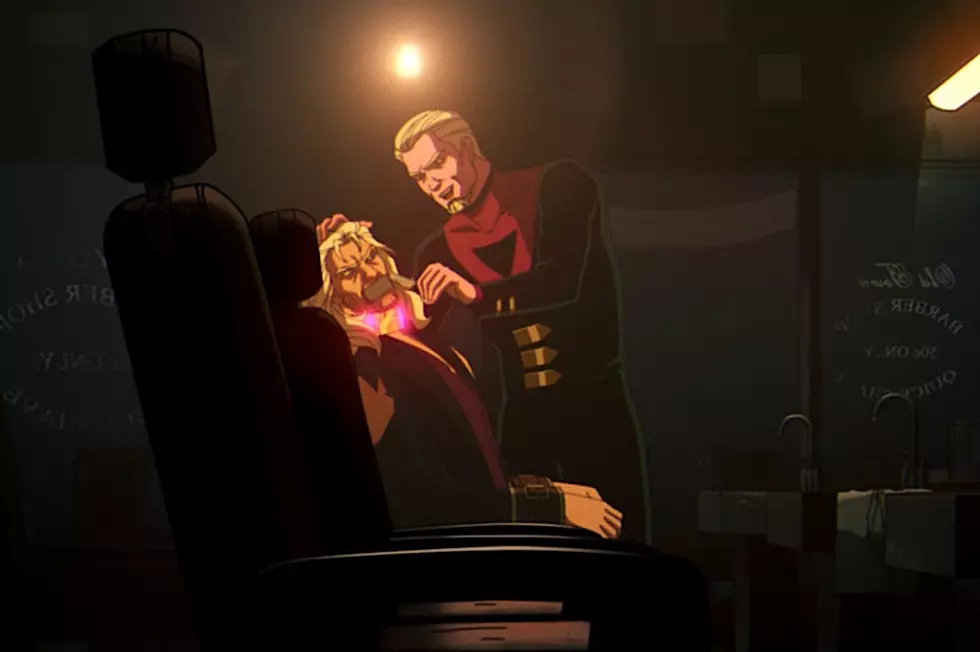

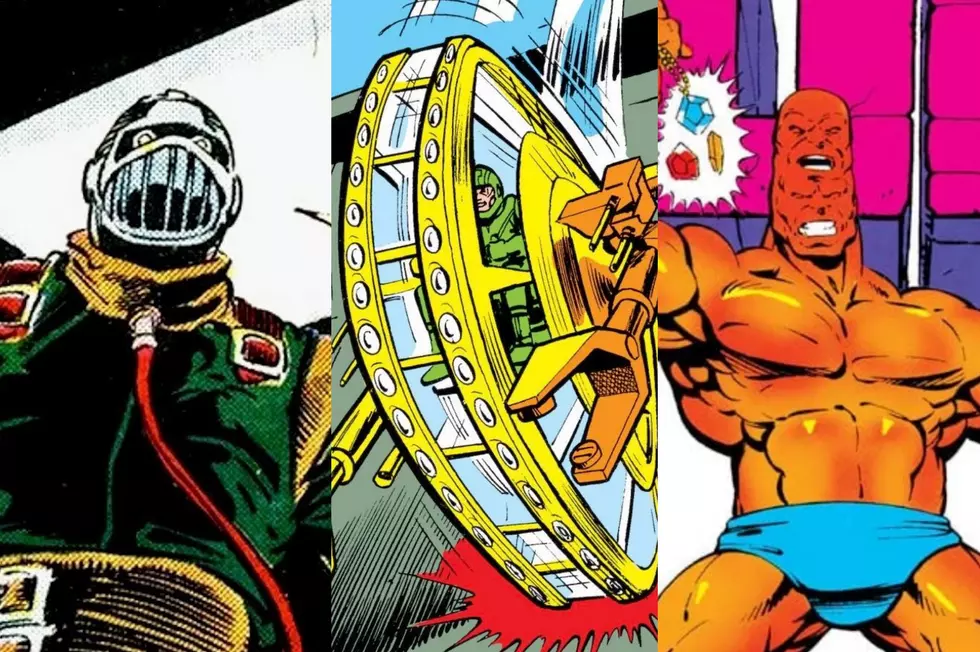


![Harrison Ford’s Spectacular $20 Million California Estate For Sale — See Inside! [Pictures]](http://townsquare.media/site/204/files/2024/04/attachment-harrison-ford-house-for-sale-pictures.jpg?w=980&q=75)
